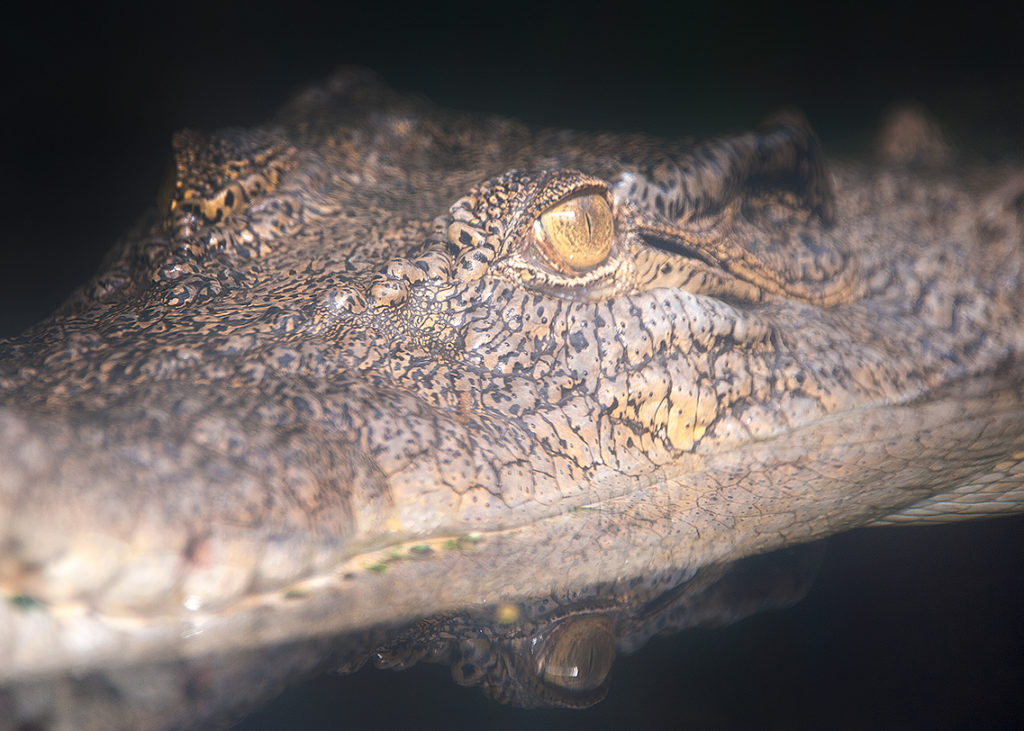How to photograph through glass and mesh. All photographs © Al Macphee/MiraclePR
When on a family trip to the zoo, one of the grandkids decided to have a go at taking a photograph of this snake in a glass-fronted cage. Of course, you could see reflections in the image so I showed her how to avoid that outcome.
That inspired me to write this tutorial on how to photograph through glass and mesh.
How to Photograph Through Glass
Ideally, you’ve got clean glass! But what does a toddler do when he goes up to glass? He holds his hands up, leans on the glass and cries, ‘Ooh, a tiger!’
You want to clean that glass you’re looking through so standard equipment for my time at the zoo was a good, clean cloth to wipe away any fingerprints. I was also allowed to carry glass cleaner, so that helped.
If you stand away from the glass, nine times out of ten you will catch some reflections. What’s really useful is a collapsible lens hood which seals the area around your lens from light while saving your lens from being damaged by touching the glass.
Wear dark clothing to hide any reflections and look out for people walking behind you wearing bright clothing or holding a carrier bag.

If you take a photograph of your subject when it is very close to the glass, you are likely to have fine glass scratches showing up in your resulting images, even if you don’t see them with the naked eye. You could then be spending a lot of time on Photoshop cloning in to sort out the scratches.
If you use a longer lens and get the animal when it’s further away, you can solve this problem.
Finally, use manual focus to ensure you are capturing the subject rather than any imperfections on the glass, etc.
How to Shoot Through Mesh
The trick with mesh is to get as close as you can to the mesh while the subject is as far away from the mesh as it can be. So, you are effectively blurring the wire so much that it disappears from your shot.
Now, if it’s not a dangerous animal, in theory you can get your lens into the gap between the wire. Don’t ever be tempted to climb over a fence or barrier, even with relatively safe animals. Use your lens to zoom in; you’re not going to get anything better.
Don’t ever be tempted to climb over a fence or barrier, even with relatively safe animals. Use your lens to zoom in.
A Note on Etiquette
If you’re taking photographs at the zoo, be aware that many of the animals are very sensitive. As I explained in my earlier blog post, gorillas can get stressed, particularly at the end of the day. You don’t need to stand at the glass – you can look through the glass from a distance.
And if it’s dark in there, don’t use your flash gun! Put yourself in the animals’ position. If you were sitting in the dark, watching TV and someone stuck his head up outside your front window and set his flash gun off half a dozen times it would be a little bit annoying wouldn’t it? Now, imagine it happening all day, every day. It could dazzle you. If it’s dark in there, it’s dark for a reason. Take bats. They are nocturnal so it would be like someone setting a flash gun off in your bedroom.
Rules are there for a reason. If a fence is there, it’s not just there to make the area look pretty; it’s there for your safety. Don’t climb over the fence. Use the length of your lens.
Have a burning photography question you would like Al to write about in his next blog post? Email info@miraclepr.com with your request.

